Redroot Pigweed
This weed can be difficult to control in non-competitive crops like flax. It can also act as a host for tarnished plant bug which, in turn, can infest many field crops.
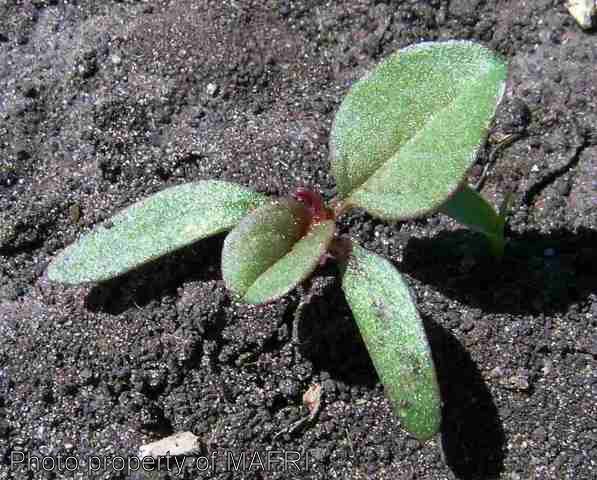 click to enlarge |
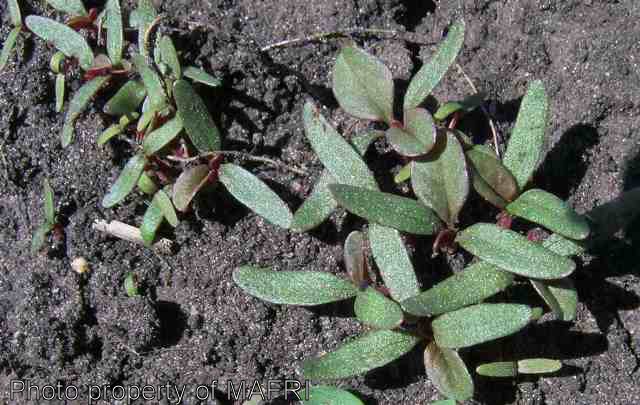 |
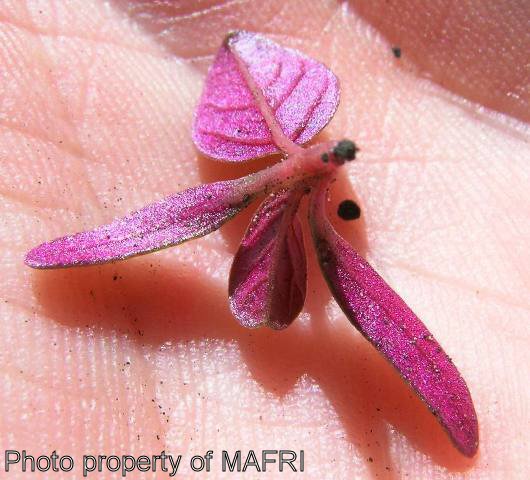 |
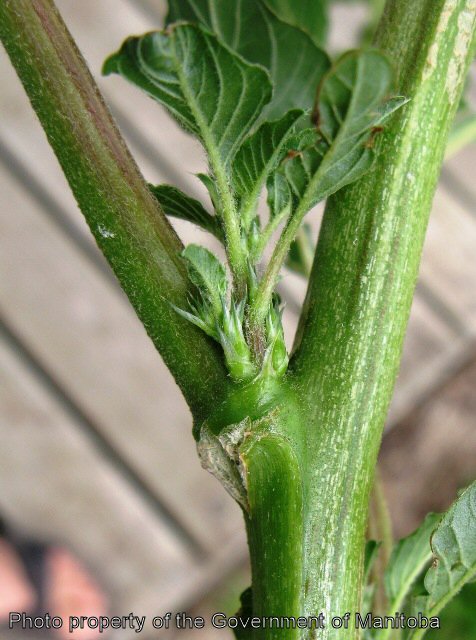 |
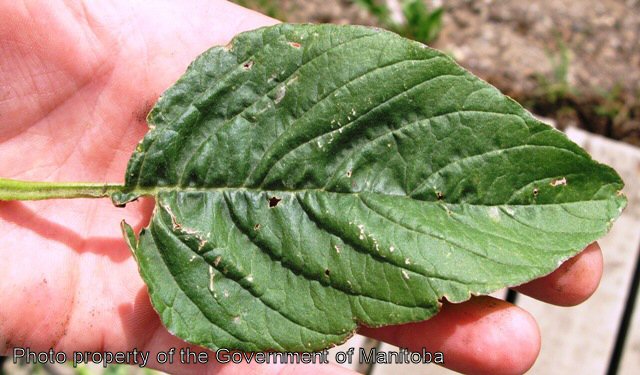 |
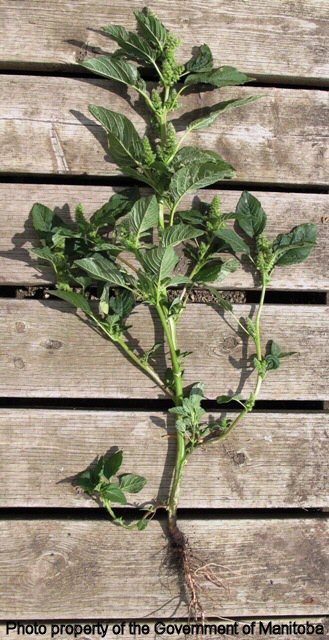 |
 |
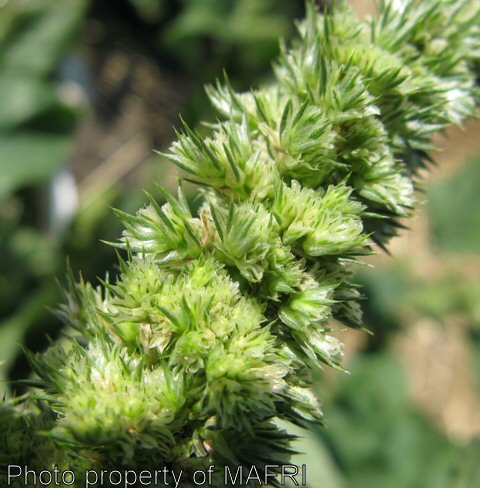 |
 |
 |
Biology
Redroot pigweed grows in cultivated fields, pastures, roadside ditches, and undeveloped areas. It is a common annual weed, producing many seeds that remain viable for up to 5 years. It has a long, fleshy, reddish to pink taproot. The stems are erect, light green, stout, branched, 60-90 cm (1-3 ft.) high, rough, and angular. The leaves are alternate, stalked, dull green, ovate, rough, and 8-10 cm (3-4 in.) long. The flowers are numerous, small, green, crowded into dense finger-like spikes in axils of the leaves, and in a large terminal spike or panicle.
Redroot pigweed requires high temperatures for germination (optimally, in the 20-30 degrees C or 70-85 degrees F range) and will continue to germinate throughout the summer if there is adequate soil moisture. It will grow almost anywhere and in any crop but is most abundant on rich soils, thriving at higher temperatures.
Scouting Techniques
Take a minimum of 20 weed counts across the field. Scout frequently because under hot conditions, redroot pigweed can advance through it's growth stages quickly, potentially escaping the window for herbicide application.
Effects On Crop Quality
This weed, because it is an alternate host for many crop insect pests, can indirectly affect the development of field crops.
Threshold/Yield Loss
Redroot pigweed causes yield losses in most crops, particularly under hot conditions.
Control Tips
Crops established before soils warm and hot weather sets in are very competitive with redroot pigweed.
Herbicides are available in most crops for control of redroot pigweed. Watch growth stages carefully under hot conditions because the weed can quickly advance beyond the recommended stages for herbicide application.
